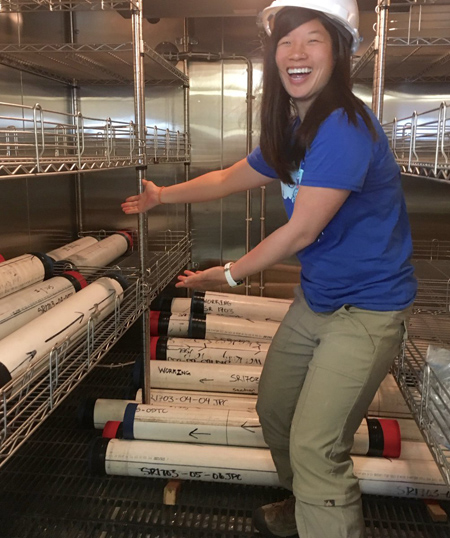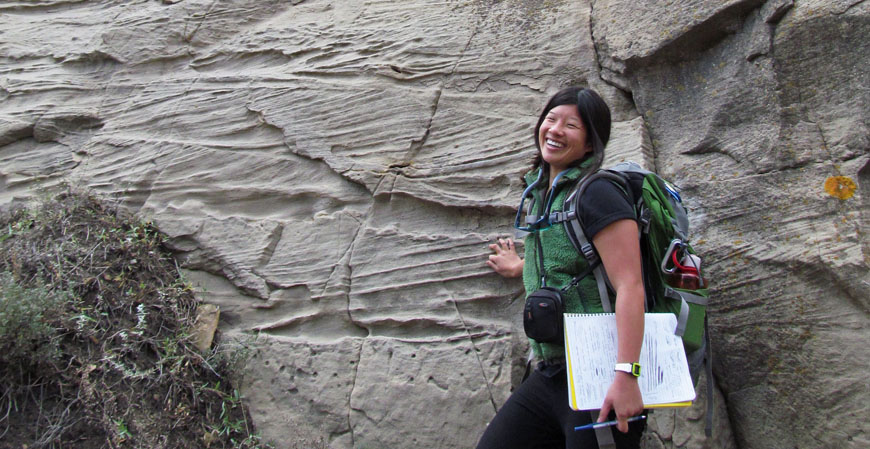
What are some of the tools you use to conduct research?
EW: Sediment cores from Papua New Guinea are stored in Scripps' core archives. During the first three years of my PhD, I sampled from these cores, separated clays for X-Ray diffraction analysis, and then analyzed those samples for mineralogy at San Diego State University. The theme that ties all of my projects together are seismic datasets, which are crucial because they provide a snapshot of how sediment layers stack underneath the ocean floor. During the winters and summers, I would have an opportunity every year to conduct field work on cruises in the Inner Continental Borderlands. On these cruises, we collected seismic data and/or collected sediment cores. At the end of my third year, we collected the seismic and surficial sediment dataset for the project in San Luis Obispo.
What’s life like as a Scripps student?
EW: Currently, most of my day is spent processing seismic data, making figures, and writing. Last year, I was part of a committee of students and postdocs that organized the Plate Tectonics Symposium at Scripps, an event commemorating the 50th anniversary of the founding of Plate Tectonics theory. As a part of that, we invited speakers, structured the symposium, wrote grant proposals, solved logistics, publicized it, and more.
What’s the most exciting thing about your work?
EW: I just started a new project looking at turbidites–sediment deposited by an underwater current flowing swiftly downslope due to the weight of the sediment it carries–in the Inner California Borderlands and how they may record past earthquakes and climate. I've gone on many cruises throughout my PhD to the Borderlands and to finally work on it is a real treat. Almost every day I find out something new. The most enjoyable part of my work is that through these datasets we can unravel what geologic processes have happened in the past.
Are there any role models or mentors who have helped you along the way?
EW: Pat and Neal have been immensely helpful. I also appreciate the dedication and hard work from my labmates (students and postdocs) who give me invaluable advice and have also helped me improve my writing and presentation skills. Every time we present at a major conference, give a presentation for departmentals or qualifiers, or defend, we give a mock-presentation.
What are your future plans?
EW: I would like to pursue a postdoc to expand my skill set. I would be very interested in learning about either computer modeling or new geochemical proxies.
- Shawndiz Hazegh






修改评论